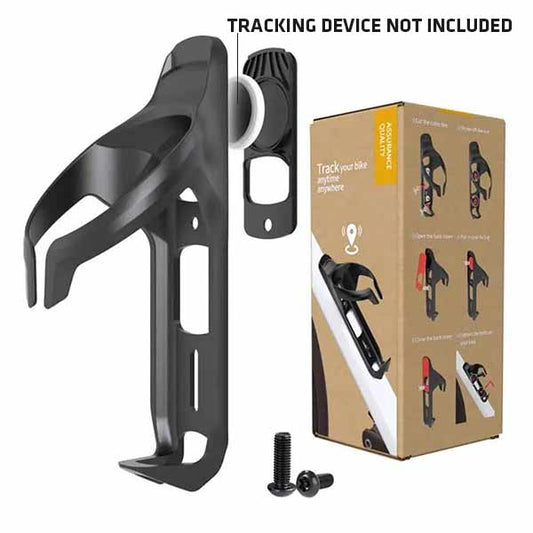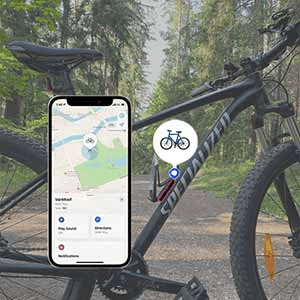7 Commuter Bike Hacks That Save Time and Stress
Bike commuting offers incredible benefits—from fitness and financial savings to environmental impact—but it also comes with unique challenges. The daily journey can sometimes feel like a logistical puzzle of gear management, route planning, and weather variables. The good news? A few smart strategies can transform your commute from a potential source of stress into the best part of your day.
In this guide, you'll discover seven practical commuter bike hacks that seasoned cyclists use to streamline their journeys and arrive at their destinations feeling energized rather than exhausted. These techniques will help you build efficiency into your routine, protect your bicycle, and make commuting by bike something you actually look forward to.
Prep the night before like a pro
The secret to stress-free morning rides starts the evening before. Setting up your gear in advance eliminates decision fatigue and prevents the morning scramble that often derails commuters.
Create a designated "launch pad" where you place everything you'll need: clothing laid out by outfit (including undergarments and accessories), packed lunch, work materials, and cycling gear. This simple habit eliminates the frantic morning search for matching socks or missing keys.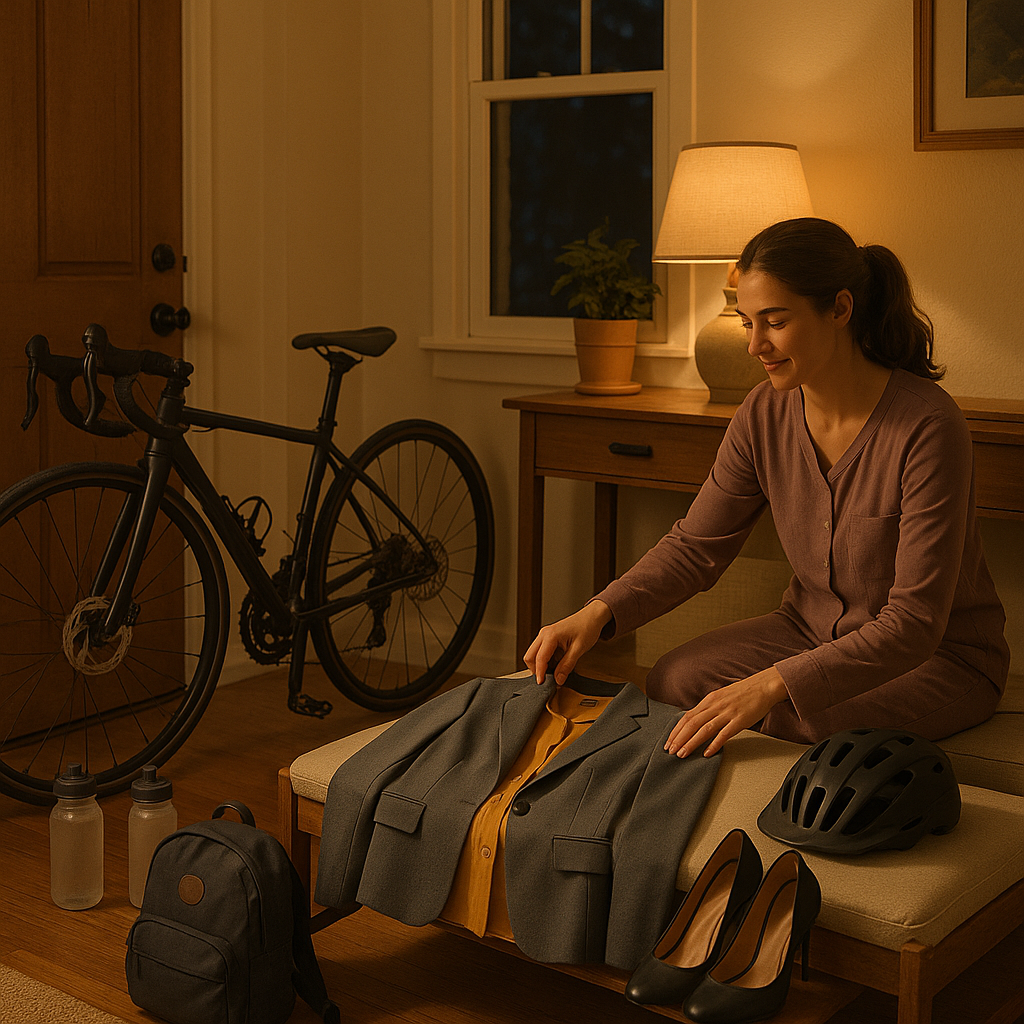
Many regular riders follow a simple checklist approach:
- check weather forecast and select appropriate layers
- charge lights and devices
- prepare breakfast and lunch
- fill water bottles
- perform quick bike inspection (tire pressure, brakes, chain)
The time savings are substantial—what might take 25 scattered morning minutes compresses into a smooth 10-minute routine. This preparation shift doesn't just save time; it changes your entire mindset. When everything is ready to go, your brain enters the day with calm confidence rather than scattered urgency.
For those concerned about bicycle security during commutes, consider adding a discreet AirTag mount to your preparation routine. The hidden power of AirTag mounts for cyclists offers peace of mind without advertising valuable tracking technology.
Find (and test) your easiest route
The path you take can make or break your commuting experience, and counter-intuitively, the shortest route is rarely the best choice.
Start by exploring multiple potential routes using cycling-specific navigation apps like Strava, Google Maps (with bicycle option enabled), or local cycling organization maps. These tools highlight dedicated bike lanes, paths, and cyclist-friendly streets that standard navigation might miss. Pay special attention to elevation changes—a slightly longer route with fewer hills might actually save energy and time.
Testing is crucial. Ride potential routes on weekends when traffic patterns differ and you have time to explore without pressure. Note problem areas like difficult intersections, stretches without shoulders, or sections with poor visibility.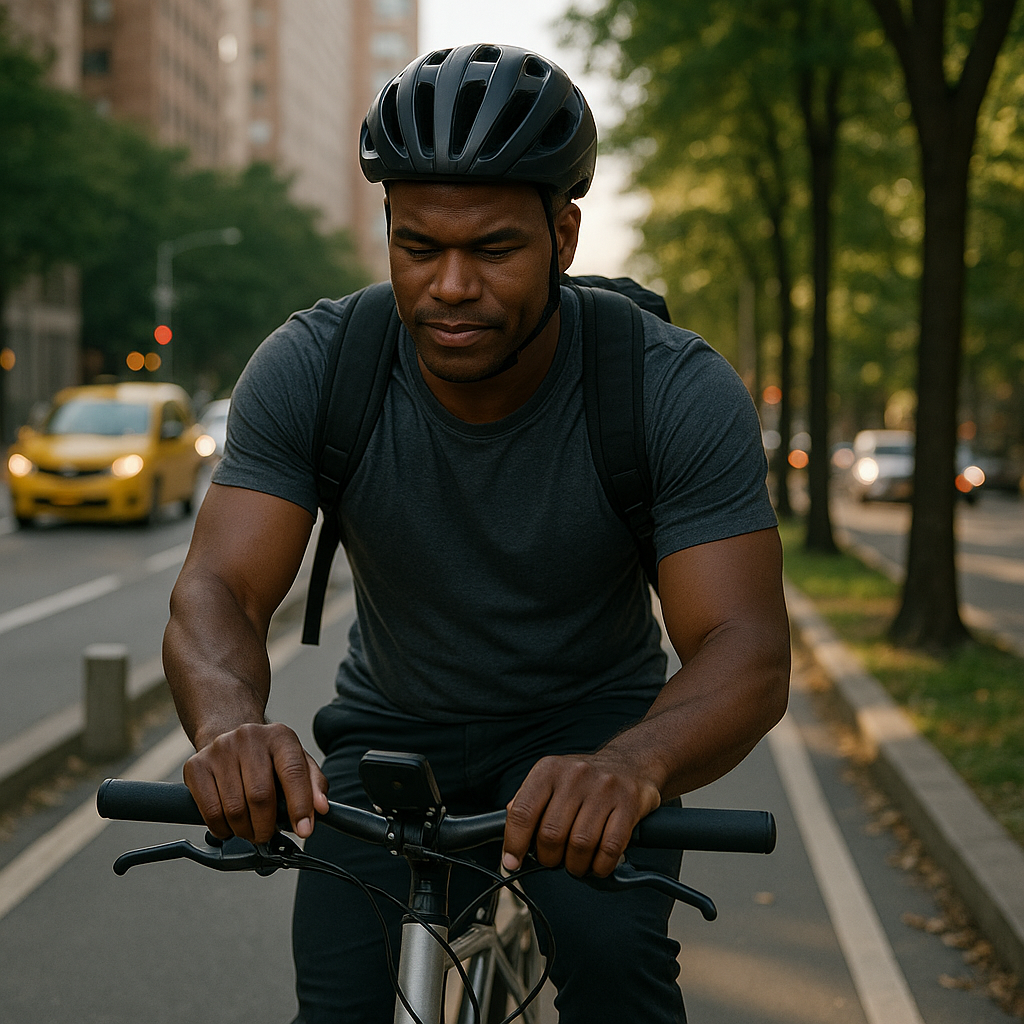
Time yourself realistically, including any walking portions or traffic signal waits.
Consider these factors when mapping your bike commute:
- traffic density during your actual commute hours
- road surface quality (potholes, gravel, debris)
- lighting conditions (especially important for evening rides)
- availability of emergency bailout options (public transit access points)
Many cycling advocacy groups maintain databases of member-recommended routes, which provide real-world insights beyond what digital tools can offer. These community resources often highlight the safest route for cyclists through challenging urban environments.
Optimize carrying your stuff
How you transport your belongings makes an enormous difference in comfort and efficiency. The right carrying system should distribute weight properly and allow freedom of movement.
The three main options each have distinct advantages:
- Backpacks - Versatile and portable but can cause back sweat and strain
- Panniers - Distribute weight low and away from your body, reducing fatigue
- Basket/front racks - Allow easy access but may affect handling
The best panniers for commuting feature waterproofing, quick-release mechanisms, and convertible straps for off-bike carrying. Quality options from brands like Ortlieb, Thule, and Arkel represent investments that pay dividends in durability and performance.
No-sweat packing requires strategic approaches. Roll clothes rather than folding to minimize wrinkles. Store a week's worth of office clothes at work if possible, rotating outfits to reduce daily carrying needs. Keep a compact toiletry kit with deodorant and refreshing wipes permanently in your bag.
For professional settings, consider a hybrid approach: transport heavier items (laptops, shoes) via panniers while carrying a small messenger bag or lightweight backpack for valuables and daily essentials. This combination gives you maximum flexibility while protecting your anti-theft gear for city cyclists from exposure.
Always have (the right) tools and lights
Being prepared with proper equipment prevents minor inconveniences from becoming major time-wasters. A thoughtful toolkit and lighting system are essential investments.
Every commuter bike maintenance kit should include these minimum essentials:
- multi-tool with common hex wrenches and screwdrivers
- tire levers and patch kit or spare tube
- compact hand pump or CO2 inflator
- quick-link for chain repairs
Store these items in a dedicated tool roll or pouch that stays permanently with your bike. The investment in quality tools pays off immediately when you can handle a flat tire or loose component in minutes rather than walking miles or waiting for rescue.
Lighting deserves special attention. The best lights for bike commuters balance visibility (being seen by others) with illumination (seeing your path). Many commuters mistakenly focus only on brightness (lumens) when beam pattern and coverage area matter equally.
For urban riding, look for lights with side visibility and "be seen" modes. For darker routes, prioritize even beam spread over maximum brightness at the center. USB rechargeable options have largely replaced battery-powered models, but keeping a backup set with fresh batteries provides peace of mind.
Perform a 60-second pre-ride check each morning: squeeze brakes, bounce-test the tire pressure, spin the pedals backward to check chain operation, and verify that lights are charged and securely mounted. This quick ritual prevents the frustration of discovering mechanical issues mid-journey.
Dress smart - comfort, weather, and the office
Clothing strategy can make or break your cycling experience, especially when transitioning between active commuting and professional environments.
The layering principle remains the golden rule for avoiding sweaty commutes. Start with moisture-wicking base layers, add insulating mid-layers as needed, and top with a windproof/waterproof outer shell. This system allows for micro-adjustments as your body temperature changes during the ride.
Technical fabrics have revolutionized apparel options. Modern merino wool blends provide natural temperature regulation and odor resistance while maintaining a professional appearance. Quick-drying synthetic materials can transition from bike to desk with minimal fuss. Several brands now specialize in cycling-specific business casual wear with hidden stretch panels and reflective details.
For longer or more intense commutes, consider these practical approaches:
- keep a "clothing cache" at work with spare professional attire
- utilize the roll-and-bundle packing method to minimize wrinkles
- invest in packable, lightweight shoes that compromise neither riding comfort nor professional appearance
- carry lightweight rain gear year-round (packable rain pants and jacket)
Weather adaptability comes through preparation. Spring and fall demand versatile layers that can adjust to temperature swings. Summer riding often works best with minimal cycling clothing and complete changes at the destination. Winter requires strategic protection of extremities—quality gloves, shoe covers, and headwear make cold-weather riding surprisingly comfortable.
Lock up like a pro (and track your bike)
Bicycle theft remains a persistent concern for commuters. A comprehensive security approach combines physical deterrents with modern tracking technology.
The foundation of bike security remains proper locking technique.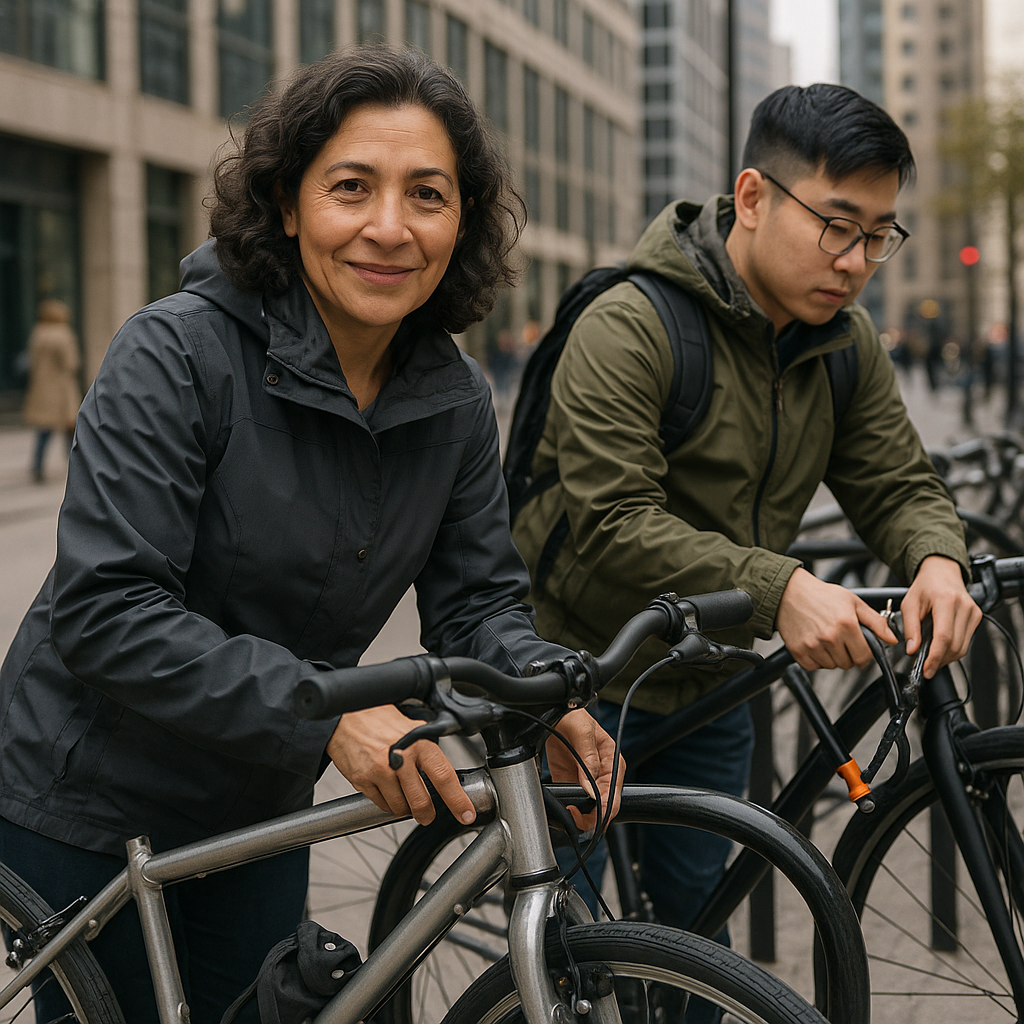
Always secure the frame and at least one wheel to an immovable object. Position your bike in high-visibility areas with foot traffic, preferably under security cameras when available.
The best bike locks for commuters offer balanced protection without excessive weight. U-locks provide excellent security-to-weight ratio for urban environments. For maximum protection in high-theft areas, employ the "redundancy principle"—use two different lock types (U-lock plus chain or folding lock) requiring different tools to defeat.
Modern technology has added new layers to bicycle security. AirTag bike tracking has become increasingly popular, allowing discreet monitoring through Apple's extensive network. These compact trackers can be concealed within frames, under saddles, or in handlebars. While not preventative, they significantly improve recovery chances if theft occurs.
Consider these advanced security measures:
- register your bike with local police and national databases
- photograph your bicycle and record the serial number
- remove easily stolen components (lights, computers, bags) when parking
- use security skewers or locking nuts for wheels and components
The importance of a bike lock and AirTag combination creates a security system greater than the sum of its parts—physical deterrence backed by tracking capability. This layered approach provides substantial peace of mind during workday parking.
Build routine—but stay flexible
Sustainable bike commuting comes through building consistent habits while allowing adaptability for life's inevitable variations.
Start with modest, achievable goals when building bike commute habits. Many successful commuters begin with just 1-2 days per week, gradually increasing frequency as confidence and fitness improve. Track your progress with simple metrics like commuting days per month rather than consecutive streaks, which can create unnecessary pressure.
Weather flexibility represents a critical mental shift. Experienced commuters develop personal thresholds for conditions they will and won't ride in, rather than taking an all-or-nothing approach. Having contingency plans—such as public transit routes, carpool options, or occasional work-from-home days—prevents feeling trapped by your transportation choice.
Try these approaches to build sustainable routines:
- create "trigger habits" that automatically lead to cycling (e.g., preparing gear becomes the cue to ride)
- connect with other bike commuters for accountability and community
- celebrate milestones and progress (distance milestones, consecutive days, money saved)
- adjust expectations seasonally rather than abandoning cycling entirely
Many riders find that flexible commuting—cycling when conditions are favorable while having backup options—leads to greater long-term consistency than rigid approaches.
This balanced mindset helps protect your bicycle from theft through thoughtful decision-making about when and where to ride based on security considerations and conditions.
As you build your routine, remember that each commute serves multiple purposes: transportation, exercise, mental decompression, and environmental impact. Acknowledging these layered benefits helps maintain motivation through challenging periods.
Frequently asked questions
What's the best way to carry work clothes on my bike commute?
Roll clothes (rather than fold), use panniers or racks to avoid back sweat, and consider storing a set of clothes at the office.
Do I need to buy special commuter bike lights?
Not always, but choose lights with good beam spread (not just high lumens), and ensure you have both a headlight and tail light for safety.
How can I keep my bike secure while at work?
Use a high-quality lock that secures both frame and wheels, and consider adding an AirTag or GPS tracker for added peace of mind.
Is it safe to commute by bike year-round?
With the right clothing layers, lights, and preparation, bike commuting can be safe and enjoyable in all seasons.
What if I don't have a shower at work?
Many commuters freshen up with baby wipes, keep spare clothes at the office, and ride at a leisurely pace to minimize sweat.


